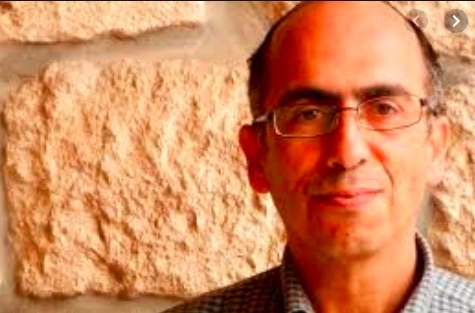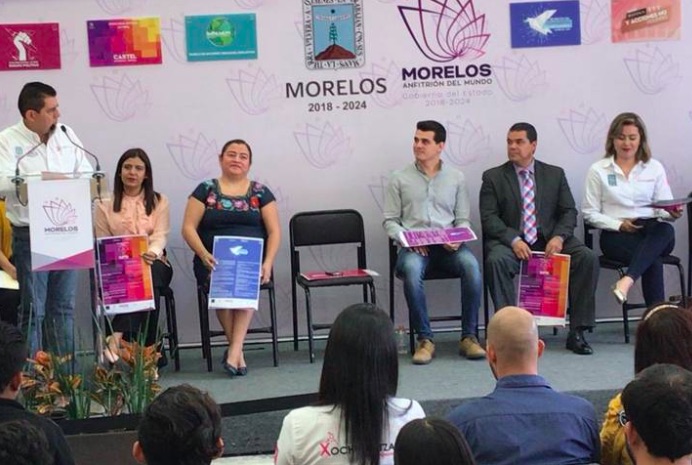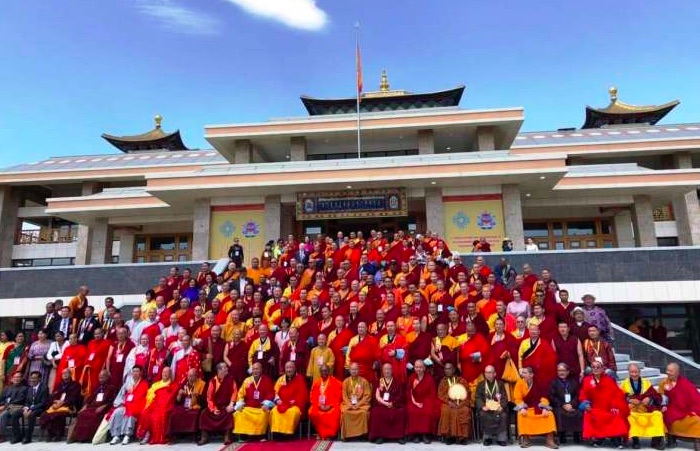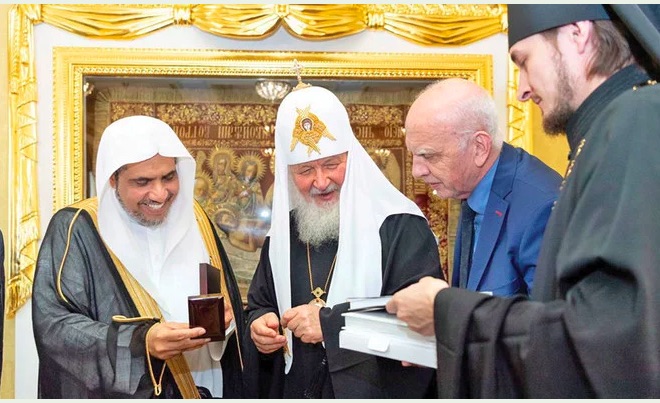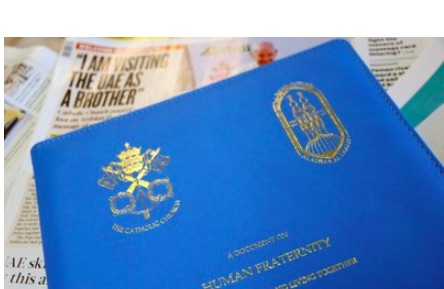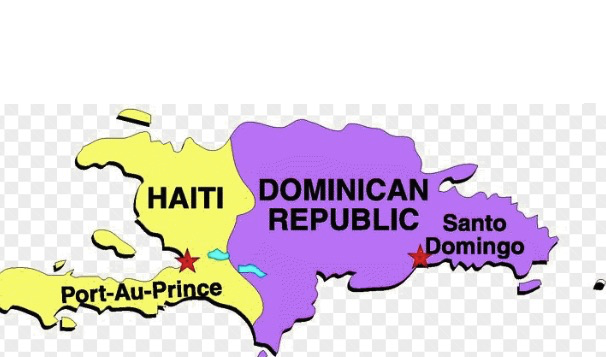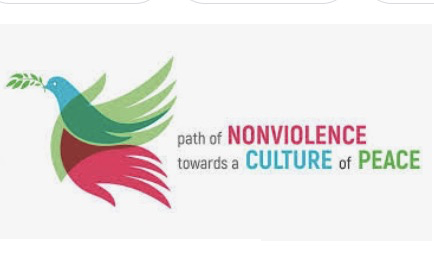TOLERANCE & SOLIDARITY .
An article by Bahar Bastani, M.D. – Saint Louis University, School of Medicine from Persian Heritage-part one and part two
There is a public perception that the Muslims and the Jews have an eternal animosity and have been in conflict through out their histories. However, Islam recognizes Judaism and Christianity as legitimate monotheistic faiths, and the Jews and the Christians as People of the Book who have received divine guidance. Moreover, in contrast to the Christians, Muslims did not consider the Jews as killers of God or God’s son. Thus, there was no inherent theological conflict between the Muslims and the Jews. The early conflicts between the Muslims and the Jews in Medina were political in nature, between the new rising power of the Islamic community (Ummah) and the older established power centers by the Jewish tribes. During the Golden Age of Islamic Civilization, 9th-12th centuries CE, both the Muslim and the Jewish civilizations flourished in the Islamic centers of higher learning in Baghdad and al-Andalusia-Spain, and the Muslim territories was safe heaven for the Jewry of the world. Also, when Spain fell under the Spanish Catholic rule in 1492 and the Jews where being persecuted, it was the Ottoman Empire that send ships to rescue the Jews from Spain into the Muslim territories. The current conflicts between some of the Muslim countries and Israel is also of political and not ideological in nature.
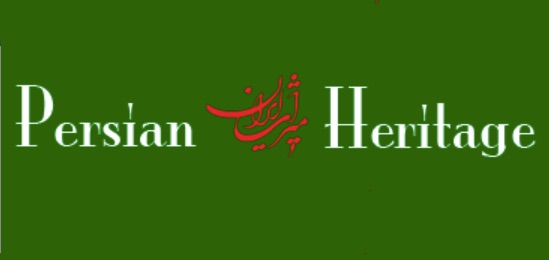
Part one
Judaism and Islam are both true monotheistic Abrahamic religions that originated in the Middle East. The prophet Moses founded Judaism among the ancient Hebrews over 3,500 years ago (1500BCE = Before Common Era = Before Christ). The prophet Moses was a descendent of the prophet Abraham through his wife Sarah, their son Isaac, and their grandson Jacob (also known as Israel). The Torah (the Hebrew Bible = the Christian Old Testament = the first five books of the Bible [Genesis, Exodus, Leviticus, Numbers, Deuteronomy]) is the foundational text of Judaism that encompasses the religion, philosophy and culture of the Jewish people. It is believed by the Jews that God gave the Tanakh (the written Torah [the Five Books of Moses], Nevi’im [“Prophets”], and Ketuvim [“Writings”]) to the prophet Moses. The books of the Tanakh were passed on generations accompanied by the oral Torah (the Talmud: Mishnah & Gemara) that contains compiled rabbinic opinions and teachings from before the Common Era (BCE = BC) to the fifth century Common Era (CE = AD = After Death of Christ) on Jewish law & ethics, customs, history and philosophy.
The prophet Mohammad (570-632CE or AD) founded Islam in the 7th century (610CE) (1,400 years ago). The prophet Mohammad was a descendant of the prophet Abraham through Abraham’s second wife Hagar, and Abraham’s first-born son by Hagar, Ishmael. The primary sacred scripture of Islam is the Quran, which is considered by Muslims as the verbatim word of God. Other important Islamic sources are the teachings and normative example of the prophet Mohammad, which is called the Sunnah, composed of accounts called the Hadith. The books of Hadith that are considered most authentic in the Sunni Sect of Islam are called the Sihah Sittah (the six authentic books): Sahih Bukhari, Sahih Muslim, Sunan Abu Dawood, Jamia Tirmizi, Sunan Nasai, Sunan Ibn Majah. The books of Hadith that are considered most authentic in the Shia Sect of Islam are called al-Kutub al-Arbaa’h (the four books): Kitab al-Kafi, Man la yahduruhu al-Fagih, Tahdhib al-Ahkam, and al-Istibsar.
In a short interval of 622 to 732CE (within a 110 years) Islam entered into the international stage, and became an important player in vast territories stretching from Iran to Spain, Morocco, northern Syria, and the southern tip of the Arabian Peninsula. Thus, Muslims from the beginning of their history (migration from Mecca to Medina, 622CE) have been in close contact with people of the Jewish and Christian faith.
There are many shared aspects between Islam and Judaism: both are strictly monotheistic and non-compromising in a transcendent, eternal and incorporeal God who is just and merciful, who guides mankind through prophets, who prescribes laws of conduct for all daily matters from birth to death, and whom can be reached by way of prayer that should be directed to God and not to others with no need for intermediaries or clergy; a God who is aware of the thoughts and deeds of man, and who rewards the righteous and punishes the wicked justly. Both faiths believe that there is life after death, and both are messianic, believing in the coming of a savior at the end of days. Both faiths are very action-oriented, with religious acts and rituals mandated by God that should be performed routinely and correctly. Christianity, on the other hand, is more about faith and feeling in the heart. Both faiths (Judaism & Islam) describe in detail how a righteous life should be conducted on a daily basis from the time of birth to one’s death, in accordance with God’s mandates. While Jesus himself was born into a Jewish household and Jewish tradition and followed these rules, the Christians led by Saint Paul abandoned these rules claiming that the coming of Jesus meant loss of validity of the Jewish laws. The very elaborate and intricate system of laws and jurisprudence is called “Halakha” in Judaism and “Sharia” in Islam. Both are paths for a believer to reaffirm his/her covenant with the creator. For both faiths, the letter of the law is as important as its spirit. Both legal systems go into detail of how one should conduct his/her daily living matters at a personal and community level, and in relation to God. There are permissible (Kosher or Halal) and impermissible foods, specific ways to sacrifice animals for human consumption, prescribed daily prayers and rules on washing before prayers, rules about place of prayer, prescribed fasting at specific times, rules on spousal relationship, laws on inheritance, marriage, divorce, child custody, adultery, financial conflicts, stealing, treason, rituals after birth, circumcision of male offspring, and rituals at burial of the dead.
Scholars of both faiths spend tremendous time extracting these legal codes from the sacred text (the Torah and the Quran) and the oral commentaries (the Talmud and the Hadith books), and pass judicial treatises. In both faiths, learning about religious and divine laws is a form of prayer and worship, and a fulltime occupation for religious scholars and leaders (rabbis and ulema). These religious scholars act as interpreters of the law for their communities in religious matters and do not have any liturgical role, as in the case of Christian priests, since in both Judaism and Islam, the believers directly pray to God, with no need for intermediaries. They also served as judges and arbitrators in community conflicts. In both faiths there has been emphasis on memorization of the sacred text in early childhood. Over time, the synagogues and the mosques that used to serve as the community centers, courts of law and centers of higher education, became devoted exclusively to the study of religious legal matters to an extreme extend, and focused more on the past commentaries and oral traditions than their original sacred texts, i.e. the Torah and the Quran.
Islam considers the Christians and the Jews as legitimate communities of believers in God. They are referred to in the Quran and the Hadith as “people of the Book” (Ahl al-Kitab), who have received divine guidance through two highly revered prophets, i.e., the prophet Moses and the prophet Jesus. The prophet Moses is mentioned 136 times and the Children of Israel (Banu Israel = children of Jacob) 43 times in the Quran. There are five major chapters in the Quran that are devoted significantly to the story of the prophet Moses and Banu Israel, namely the second chapter (Al-Baqara – The Cow), chapter 20 (Ta-Ha), chapter 26 (Ash-Shu’ara – The Poets), chapter 27 (An-Naml – The Ants), and chapter 28 (Al-Qasas – The Stories). And, over 16 verses in the Quran emphasize that the Quran has come to affirm the truth in the Bible and the Torah, and not to reject them, emphasizing their role in human guidance (Quran 5:46, 66, 68).1
The early interactions between Muslims and Jews were very positive. Mohammad considered them to be his natural allies and admired them as true monotheists. The earliest verses of the Quran were very sympathetic to the Jews. Unlike the Christians, Muslims did not view the Jews as deicides (killers of “God”) (the Quran claims that the Jews did not kill Jesus; Quran 4:157)2 and did not attribute evil to the Jews. The Quran did not present itself as the fulfillment of the Hebrew bible, but rather as a restoration of its original message. The Quran praises the prophet Moses, depicts Israelites as the recipients of divine favors, and in many of its verses glorifies the Hebrew prophets (Quran 6:85),3 and mentions God’s favors to the Children of Israel that made them excel among the nations of their time (Quran 2:47, 122).4
On the 11th year of Mohammad’s prophet hood (622CE), because of the heightened persecutions against the Muslims and an attempt to assassinate the prophet Mohammad in Mecca, and after repeated invitations from people of Yathrib (later named Medina), the prophet Mohammad, along with some 200 immigrants from Mecca (called the “Muhajerun”) fled to Yathrib (Medina). The event hallmarks the beginning of the Islamic calendar, al-Hijra. This was at the invitation of the people of Medina, who were comprised of 2 prominent rival Arab tribes (Aus & Khazraj), which had been in a seemingly never-ending perpetual fight for centuries. The prophet Mohammad was appointed as the governor, judge and arbitrator of this city. In Medina, along with the Muslim immigrants from Mecca (the “Muhajerun” = the emigrants) were the newly converts of Medina (the “Ansar” = the helpers), some remaining idol worshipers, some Christians, and 3 powerful Jewish tribes. In the very beginning, the prophet Mohammad drew a “social contract” known as the “Constitution of Medina” or “Medina Charter”, a kind of alliance or federation among the prevailing communities in Medina. It upheld a peaceful coexistence between the Muslims, Christians, Jews and other city dwellers in a new, inclusive concept of Umma (community of the citizens), granting them freedom of religious thought and practices.
It was a formal agreement guaranteeing interfaith, multicultural coexistence, including articles emphasizing strategic cooperation in the defense of the city, and prohibiting any alliance with the outside enemies. It also declared that disputes would be referred to the prophet Mohammad for arbitration. It was acknowledged in the contract “the Jews will profess their religion, and the Muslims theirs,” or “to the Jews, their own expenses, and to the Muslims, theirs. They shall help one another in the event of any attack on the people covered by this document. There shall be sincere friendship and exchange of goods, good counsel, fair conduct and no act of treason between them.”
The prophet Mohammad expected the Jews of Medina to be his natural allies and accept his prophet hood, since his message was in alliance with their long-standing tradition of monotheism, confirming the truth that had been revealed to them from God in the Torah. However, as the conversion of the perpetually fighting pagan tribes of Medina to Islam united them in a Muslim Umma (community of the faithful) and the Muslims gained more power, tribal politics led the Jewish tribes of Medina to worry about this newly rising power. They refused to accept Mohammad’s prophet hood, and in the subsequent years that wars happened between the Meccan pagans (Quraysh tribes) and the Muslims of Medina the Jewish tribes secretly sided with the offending pagans. Moreover, on religious grounds the Jews were skeptical of a non-Hebrew prophet. While the prophet Mohammad had no prejudice against the Jews and considered his message as substantially the same as theirs, this initially peaceful coexistence soon ended. Around 2 years after Hijra (immigration of Muslims to Medina) the direction of prayer (qibla) of Muslims changed from Jerusalem to Mecca (624CE = 2AH), further emphasizing the identity of the new faith (Islam) as distinct from Judaism.
The 3 powerful Jewish tribes in Medina were the Banu Qaynuqa, the Banu Nadir, and the Banu Qurayza. The Banu Qaynuqa were expelled from Medina after the Battle of Badr (624CE; 2AH), wherein the first armed confrontation Muslims decisively defeated the pagan forces of Mecca (Quraysh tribe). According to Ibn Ishaq (85-151AH),5 shortly after this victory, a Muslim woman was disrespected by a Jewish merchant in the Jewish quarter of goldsmiths, by stripping off her dress and head-cover. A Muslim man who came upon the resulting commotion killed the Jewish merchant. A Jewish mob of the Qaynuqa tribe killed the Muslim man in retaliation. This led to a great turmoil in the city. The prophet Mohammad gathered the Jews of the Banu Qaynuqa in the bazaar, warning them to stop escalating hostilities or they would face the same fate of the Meccan pagans in the Battle of Badr. He also asked the Jews to accept him as a prophet of God. The prophet Mohammad was mocked over his victory over the Meccan pagans, and the Battle of Badr was ridiculed and claimed as insignificant. He was further told that the Muslims would not dare to confront the Jews. The event led to a siege of the Qaynuqa Jewish fortresses and their expulsion from Medina.
Part two
The Banu Nadir tribe was expelled from Medina in 625 CE (3 AH) after an alleged attempt to assassinate the prophet Mohammad a few months after the Battle of Uhud. In that battle, an army of 3,000 men of Meccan pagans (Quraysh tribe) attacked a Muslim force in Medina (around 700 defending men), and despite early success in the battlefield, Muslims had very heavy losses.
The Banu Qurayza tribe was vanished after the Battle of Trench in 627 CE (5 AH), when a combined force of more than 10,000 men from the pagan Meccan Quraysh tribe and many of the Bedouin pagan tribes of the Arabian peninsula united forces under the Jewish leadership of Huyayy ibn Akhtab to conquer Medina and eradicate Muslims once and for all. After a month of an unsuccessful siege of Medina, behind a trench dug by the Muslims and adverse weather conditions, the pagans retreated with heavy losses back to Mecca. During the unsuccessful siege of Medina, the pagans secretly negotiated with the Jews of the Banu Qurayza to provide them with a safe passage to attack the city from behind. This was considered a violation of the peace treaty (the constitution of Medina). The prophet Mohammad ordered a siege of the Banu Qurayza fortresses. After their defeat, he asked them to appoint a judge of their choice to rule on the act of treason they had committed. The Banu Qurayza agreed to accept whatever verdict Sa’ad ibn Mua’dh (the leader of their former ally, the Aus tribe) would pass on them. Sa’ad, who himself was severely wounded in the Battle of Trench, invoked the Torah and declared treason as an unpardonable offense and sentenced all adult males be executed and the women and the children be taken as war captives (Quran33:26-27). However, some historians have disputed that the Banu Qurayza men were killed on quite such a large scale. It has been argued that ibn Ishaq gathered information from descendants of the Qurayza Jews, who embellished or manufactured the details of the incident.
(continued in right column)
Question related to this article:
How can different faiths work together for understanding and harmony?
(continued from left column)
The negative and derogatory verses in the Quran against the Jews (Quran 2:65, 5:60, 7:166) appeared after these events and were directed toward the wrongdoers among the Jews who disobeyed the laws of God as revealed in the Torah, who broke the Sabbath, and took usury, which was strictly prohibited for them and for the Muslims, and who were not grateful for the goods bestowed on them by God, and had altered their holy scripture (Quran 3:63, 71; 4:46, 160-161; 5:41-44, 63-64, 82; 6:91). In the Quran’s style of timely narratives, the references to the Jews and other groups were only to certain populations, and pertained to a certain period of history, and were devoid of racial and religious profiling. The Jewish people in general, and Judaism were not the targets of these remarks, and the criticisms dealt mainly with the wrong doers among the Jews. At the same time, the Quran gives legitimacy to the Jews and the Christians where it says that those among them who truly believe in the God, the Day of Judgment, and do good in this life, should have no fear on the Day of Judgment (Quran 2:62 & 5:69),10 and praises the high virtues among some of the followers of the Book (Christians and Jews) (Quran 3:113-115),11 and praises those Jews who guide others in the way of the truth and act justly (Quran 7:159).
As the people of the Book, the Christians and the Jews in the territories governed by Muslims enjoyed more protection than the followers of other faiths, and were given a minority status of “dhimmi” with rights to own property, practice their religion, maintain their places of worship, and be judged by their own judges according to their own jurisprudence, engage in commerce and operate their own schools, in exchange for a special poll tax called “Jizya”. Also, they would not be drafted into the army at wartime and they would receive all the protections that Muslims enjoyed as citizens of those communities. Moreover, they were exempt from the regular tax (Zakat) that Muslims had to pay to the government on a yearly basis.
It was at the time of the second righteous (Rashidun) caliph after the Prophet Mohammad’s death, Umar ibn al-Khattab (641 CE, 19 AH), that the Holy Land of Hijaz (Mecca and Medina and their surroundings) became forbidden to the non-Muslims, and they were only allowed in the Red Sea port of Jidda (Jeddah). He also set aside the Christian ban on the Jews and allowed them into Jerusalem for worship. At the same time some restrictive conditions were codified known as “Pact of Umar” that gave the Jews and the Christians a second-class citizen status. However, despite the dhimmi status, the Jews were still better off under the Muslim rule than under the Byzantine Christian rule.
While the dhimmi status indicated a second-class citizenship, it did not prevent a good working relationship and even friendship between the Muslims and the Jews. As individuals, the Jews reached high positions under various Muslim rulers, rabbinical courts were recognized to judge the Jews in their disputes, and the Jewish leaders were recognized to represent the Jewish communities.
After Ali ibn Abutaleb, the fourth righteous caliph after the Prophet Mohammad’s death, was assassinated in 661 CE (40 AH), Muawiya who was the Muslim ruler of Syria took over the entire Muslim empire and established the Umayyad dynasty. The Abbasids overthrew the Umayyads in 750 CE in a bloody revolt, notably by the support from the “mawali” (converted Iranians) lead by an Iranian general Abu Muslim Khorasani. The sole survivor of the Umayyad royal family, Prince Abd al-Rahman I fled to Spain that had been under Umayyad rule since 711 CE, and established a new dynasty at Cordoba, Spain. His descendent, Abd al-Rahman III proclaimed the caliphate of Cordoba in 929 CE independent from the Abbasid caliphate in Baghdad.
During the Abbasid caliphate in the Muslim Middle East, there was a gradual revival of the Persian (Iranian) culture and influence, and the old Arab aristocracy was partially replaced by a Muslim Iranian administration. The Iranians had an ancient civilization that had extensive interactions with the civilizations of India and China. The Iranian converts introduced advanced technologies in agriculture and irrigation, medicine, mathematics and astronomy, as well as a universal philosophy, and a tradition of efficient state administration. During the Abbasid dynasty, Baghdad was the capital city and seat of power in the Muslim world. It became a center for higher learning, arts and sciences, attracting people of knowledge, philosophers, architects, musicians, poets and intellectuals from all around the world. The books of past scientists and philosophers were actively translated from the Greek, Persian, Indian, and Chinese languages into Arabic, and soon the Arabic language became the means of conveying knowledge and new discoveries to the world, much as the English language is today. Muslim physicians and scientists of Persia (Iran) wrote the prefaces in Arabic for more widespread public use in the Islamic world.
The Islamic civilization flourished most in the medieval period 900 – ۱۲۰۰ CE in both Baghdad and Cordoba-Spain, as did the Jewish civilization in the Muslim territories. As the Arabic language became the state and intellectual language of the Middle East, North Africa and Muslim Spain, the Jews living in these territories adopted Arabic as a means of communication, and for several centuries most of the Jewish religious and secular intellectual production was in the Arabic written in Hebrew letters. Following the pioneering works of Rabbi Saadya Gaon in Iraq, some of the greatest Jewish classics by ibn Pakudah, Maimonides and Halevi were written in the Arabic language, which had become a legitimate tool of creation of scientific and philosophical discoveries and thoughts.
The region in Spain ruled by the Muslims, called al-Andalusia, became a center for intellectuals, poets, philosophers, and scientists of the time. The adoption of the Arabic language enabled the educated Jews to actively participate in the dominant culture, and to have access to all recent Muslim intellectual achievements in science and philosophy, as well as to the Greek intellectual heritage, which had been best preserved by the Muslim scholars. The Jews became active participants in a variety of professions, such as medicine, commerce, finance, and agriculture. The meticulous regard, which Muslim-linguists had for the Arabic grammar and style influenced Jewish linguists to study Hebrew and led to a renaissance in the Jewish poetry in Hebrew that paralleled the Arabic in meter and styles. During this period some of the greatest intellectual works in philosophy, law, grammar, and natural sciences appeared in both the Jewish and Muslim worlds. Adoption of the Arabic language and a Judeo-Arabic culture greatly facilitated assimilation of the Jews in Muslim countries, and their active participation in international trade in caravans linking east and west of the vast Muslim territories. This led to the emergence of a class of wealthy Jews in the courts of Muslim rulers who served as the bankers and financiers.
When Muslims conquered south of Spain in 711 CE, they were generally welcomed and assisted by the local Jews, and once conquered, the defense of Cordoba was left in the hands of the Jews under Muslim rule. By the time Umayyad rule was establish by Abd al-Rahman I in 755 CE, waves of Jewish immigrants escaped a century of persecution under the Christian rule in Europe, as well as the Jews from the Mediterranean region, and also from the Muslim territories from Morocco to Babylon joined the native Jewish communities there, and thus, a highly enriched-Sephardic Jewish culture was created by a mixture of these very diverse Jewish traditions from all over the world. The Jewish scholars from around the world were invited to Cordoba. During the reign of Abd al-Rahman III (912-961 CE) who proclaimed a Muslim Caliphate (independent from Baghdad) in Cordoba-Spain (929 CE), the Jews developed their own (independent of Baghdad) Jewish community, culture and Talmudic authority. Under the influence of the Muslim linguists and grammarians, a new generation of Hebrew linguists and grammarians emerged, who applied the same meticulousness that the Muslim linguists and scholars applied to the study of Arabic (the language of the Quran) to the study of Hebrew (the language of Torah). The Jewish poetry in Hebrew had a renaissance in style and meter in this period. Celebrated poets, such as Solomon ibn Gabriol, Yehuda, Halevi, Abraham and Moses ibn Ezra, as well as linguists, such as Dunash ben Labrat (innovator of Hebrew metric poetry), and Menahem ben Saruq (compiler of the first Hebrew dictionary) were some of the prominent figures of this period. Hasdai ibn Shaprut, the Jewish counselor in customs and foreign trade to Abd al-Rahman III, himself a poet and a man of letters, encouraged and supported Sephardic Jewish works in linguistics, religion, nature, politics and music.
In the fertile multicultural environment of al-Andulus, the Jewish and Muslim scholars made significant strides in astronomy, astrology, optics, geometry, medicine, philosophy, and literary works. They developed astrolabes to calculate latitudes and improved astronomical tables and instruments for navigation. Abraham ibn Ezra, a Jewish poet and scholar, wrote three books on arithmetic and number theory. Many books of science and philosophy were translated from the Greek into Arabic, Hebrew and Latin, and had a great influence on the intellectual movement and renaissance later in the rest of Europe.
The good fortune of the Jews in the Muslim Spain (al-Andalusia) that started in 711 peaked by mid 12th century when Jewish communities had flourished throughout Spain’s Islamic centers of power, Granada, Cordoba, Merida, Lucena, Saragossa, and Seville. The culture of Sephardic Judaism was shaped in this unique multicultural, diverse society where the Muslims, the Christians and the Jews lived together, interacted freely and created a culture full of vitality.
The culturally fertile and open society of al-Andalus ended in mid 12th century with the coming of Almohads (al-Muwahhidun = “the monotheists”, a Moroccan Berber Muslim movement founded in the 12th century) from north of Africa (Morocco) to help defend the Muslim Spain against the Spanish Christians who were pushing the Muslims southward. The whole of the Islamic Spain was under the rule of Almohads by 1172 CE. Their dominance continued till 1212 CE, after which they gradually lost territories to an alliance of Christian forces from north of Spain, so that the great Moorish cities of Cordova and Seville had fallen to the Christian forces by 1236 CE and 1248 CE, respectively. Jews were severely restricted under the Almohads’ reign and many chose to move northward to the newly conquered Christian lands, where they were temporarily treated better. Among those were Maimonides (aka Moses ben Maimon, Musa bin Maymun, Rambam) and his family, a great medieval Sephardic Jewish philosopher, legalist and physician, who became one of the most prolific and influential Torah scholars of the Middle Ages. They settled in Fez in Morocco, and later on in Fustat, Egypt around 1168 CE. While in Cairo, he composed his acclaimed 14-volume commentary on the Mishna Torah that still carries significant canonical authority as a codification of Talmudic law. He worked as a rabbi, physician, and philosopher in Morocco and Egypt. He was influenced by the earlier Muslim Scholars and philosophers such as Al-Farabi (Alpharabius, 872-950) and Avicenna (ibn Sina, 980–۱۰۳۷), and his contemporary Averroes (ibn Rushd, 1126-1198), and he in his turn became recognized as a prominent philosopher and polymath in both the Jewish and Islamic worlds. Gaining widespread recognition, he was appointed as court physician to Sultan Saladin and the Egypt royal family. Maimonides died in 1204 in Fustat, Egypt.
By the thirteenth century, the multicultural, humanistic Muslim societies gradually gave way to more rigid, orthodox and less tolerant societies, and the Islamic world declined in its intellectual productivity and frontiering, as did the Jewish communities within these territories. The Jewish cultural and intellectual creativity gradually shifted toward the Jewish communities in Europe. However, the Jews who stayed in the Muslim territories still had some protections, albeit as second-class citizens, in accordance with the pact of Umar.
The fate of the Jews in Spain turned around once again in 1492 CE when the Spanish Catholic royal couple Isabel I and Ferdinand II issued an edict that all the remaining Jews (hundreds of thousands) who had lived in Spain for generations should either convert to Christianity or be expelled from Spain. The Turkish Ottoman Sultan Bayazid II sent ships to Spain and rescued the Jews who were not only permitted, but were even encouraged to settle in the Ottoman territories. The Jews lived under relative calm under the Muslim Ottoman rulers. The relatively tolerant atmosphere of the Ottoman Empire encouraged large numbers of European Jews to migrate to Ottoman controlled territories. The newly arrived Jews contributed to the technological and scientific progress of the Ottoman Empire. One of their great contributions was development of the printing press in Turkey in 1493 CE, and within one year of their expulsion from Spain they established the first Hebrew press in Istanbul.
During the early Turkish conquest and expansion of the Muslim Ottoman Empire in the early 14th century, the Jews who were oppressed under the Christian Byzantine rule welcomed Muslims as their saviors. Throughout the 14th and 15th centuries the Jews who were expelled from many European lands, e.g., Hungary (1376 CE), France (1394 CE), Sicily (early 1400s), Bavaria (1470 CE), Spain (1492 CE), Italy (1537 CE), Bohemia (1542 CE), fled to and were welcomed in the Ottoman territories.
During the three centuries following their expulsion, the Jews in the Turkish Muslim Ottoman Empire ascended to high positions as court physicians (Hakim Yacoub, Moshe Hamon, Joseph Hamon, Gabriel Buenaventura, and Daniel Fonseca), and as foreign diplomats.
In the 19th century, with the decline of Turkish Ottoman power, and as a reaction to the growing European colonial powers, there was a rise in nationalistic fervor and religious radicalism that led to deterioration of the living conditions of the Jews in some Muslim countries.
Today, territorial and political disputes in the middle east have been increasingly characterized in religious terms, feeding the radicalized elements of all sides, to demonize “the others,” and have created the false notion that the Muslims and the Jews have been mortal enemies of each other throughout their histories, while, as shown in this communication, the rise and fall of civilization in both communities was interdependent upon one another and the Jews were historically better off in the Muslim lands than in the Christian lands.
(Thank you to Eshagh Shaoul for sending this article to CPNN)
